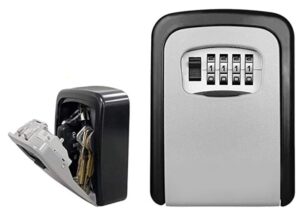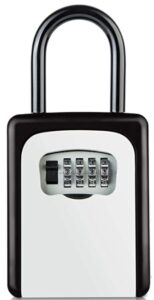Do you know where all your keys are? Not your own set of keys, but your building keys that are on-loan to tenants. That’s right. Keys that you give to tenants are, for all intended purposes, yours and, should be considered on-loan. So, do you know where all your keys are?
If you don’t, your one of thousands that don’t either. As property managers, one of the most important aspect of our job is to have control of all the keys for the properties under our care, custody and control. In a perfect world, everyone would know where all the keys are and if duplicates were made. However, that’s not reality. The reality is that old occupants might have them, they may have been copied or even stolen. As well as theft, ill-gotten keys can lead to arson, property damage and voided insurance.
To protect yourself from liability, not to mention the well being and safety of your tenants, locks should be updated at every change in tenancy.
Here are 4 good reasons why.
- Security and Peace of Mind
Updating locks will ensure only authorised people have access to the property, so your tenants can feel safe. In this day and age, the majority of new tenants say that safety in a rental unit is their top concern. Replacing or re-keying the locks ensures that, besides yourself, only approved tenants have access. Alarms, sensors lights, and other security systems are great, but nothing compares to a solid, lockable door.
- Damage and loss
Unforced entry into the unit or building home can mean a lot more that just theft. Unknowingly, providing strangers with unhindered access to your property can result in:
-
-
- Extensive property damage / vandalism
- Squatting and trespass for periods of time
- Arson, assault, and other serious crimes
-
In my previous insurance loss prevention career, I can categorically say that if a person enters your property illegally without using force, your insurance policy may not cover the resulting damage. As an owner, you have a duty of care not to facilitate unobstructed trespass.
- Old occupants
As we all know, old tenants leave, and new ones move in on a regular basis. For example, there is an excess of 120 units being vacated and occupied in any given month in our city. For those who own or manage rental properties, you may not be able to keep track of everyone who’s been there. Old tenants and their guests may still have the ability to access the building or unit. Maintenance people and cleaners may still have keys or may have misplaced keys. Ex-property managers and real estate agents may also have keys that weren’t returned.
It’s usually up to the property manger to keep track of keys when a lease ends. However, changing locks or having them re-keyed is cheap insurance.
- Copycats
Most keys can be copied for under $5 at any shopping mall or hardware store. No questions asked. This gives scrupulous burglars plenty of opportunities to find their way through without breaking and entering. Burglars can observe occupants see where they leave spare keys. They can make a copy and return to the unit whenever they want, and no one is the wiser. Short of installing locks with a restricted key system or some type of digital biometric lock, changing the locks is by far the easier and the least expensive route.
Shield Property Recommends that all locks be changed or re-keyed whenever there is a change in occupancy. It is by far the best practice to mitigate the above-mentioned issues. As a matter of fact, we feel so strongly about this that we will re-key any and all units FREE OF CHARGE whenever there is a change. It’s a small price to pay for everyone’s peace of mind. An once of prevention is worth a pound of cure.
While on the topic of locks…
Shield also encourages landlords to implement a master key system for the building. All locks leading to one unit be keyed alike and that all locks within the building be operable with one a master key system. Keyed alike locks reduce the cost of having multiple duplicate keys and allow for quicker access. A master key allows maintenance and emergency crews instant access to everyone’s apartment in the event of an emergency, or when performing maintenance.
One key per door…
Those of us old enough to remember the old Get Smart series on TV, may remember Max’s entry door. Every type of lock from top to bottom of the door whereby it took 5 minutes to lock and unlock the door. Not very practical. I’m a fan of one key per door. I’m sure you’ve all seen a locking handle and a deadbolt. Opt for a deadbolt only instead. Locking handles are referred to as spring locks. That means that the door will be able to fully close and lock unbeknownst to the tenant. You’re then facing a lock-out situation. Also, when time comes to re-key or change lock, you are incurring double the cost. If you have a locking handle, you don’t necessarily need to replace it. The locking mechanism can be ‘de-activated’. Any locksmith or cunning do-it-yourselfer can do it.
While we’re on the topic of handles and doorknobs, the Building Code will most likely be banning the use of “knobs” on new construction. Levers or other types of pulls will become the norm. Mostly because doorknobs are a potential barrier of entry for people with disabilities or dexterity issues. Certain regions of Canada, such as Vancouver have already enacted this.
Never tag your keys with the address of the building. You just never know who may find them and decide to explore. If you have a few buildings, simply put the street name on the tag. If you have multiple buildings, put the address number only. You can also use ‘Nicknames’ for your buildings.
In some instances, it makes sense to install a key lock box. In an emergency or as a matter of convenience, you can text or call the combination number to provide immediate access, then simply change the combination after the fact. These lock boxes are often available for under $35 and well worth it. In property management, we use these extensively. Either the fixed mount or the shackle mount for temporary use.
Shield Property Services
Marc Raymond’s insurance loss prevention career spans over 30 years and from coast-to-cost having been, amongst other things, a facilitator and educator in all aspects of building construction and insurance. Looking after Landlords’ interests and investments, he brings that experience and knowledge to his second career in property management.



